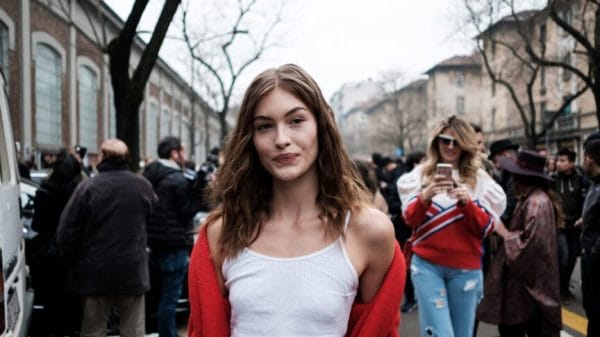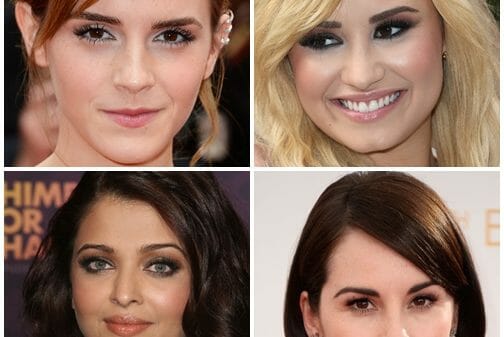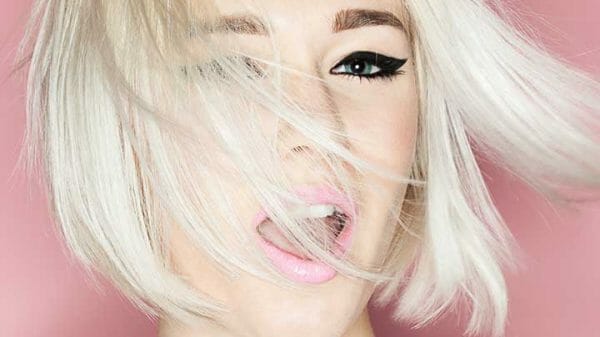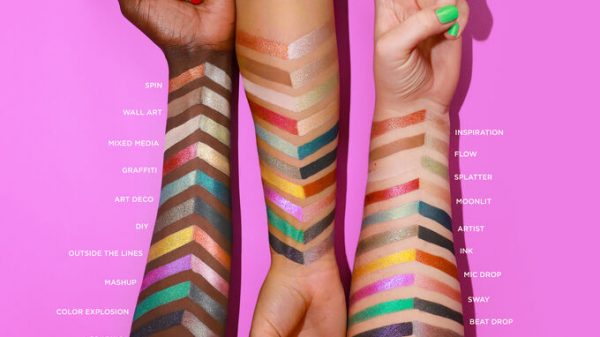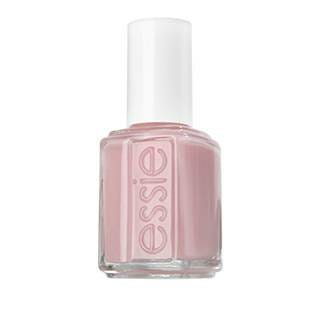How To Grow Out Bleached Hair
Worry no more, for the return to your natural hair color will henceforth be less stressful.
Bleached hair can change your overall appearance. While it may seem fun initially, bleaching has its risks. Over time, continuous bleaching may damage your hair. That is why it is best to grow out bleached hair. However, it requires a planned approach, and there is a step-by-step process to grow bleached hair properly. The overall result may vary as per your hair bleaching history, hair type, and hair growth goals. Read this article to know how to accomplish this and grow bleached hair without any damage. Scroll down to know more.
The Trend Of Hair Bleaching
Celebrities like Marilyn Monroe and Kurt Cobain have played an instrumental role in promoting hair bleaching. Their bold bleached look has inspired millions to take up bleaching without even knowing what it is.
The idea behind hair bleaching is to have strands of colored hair. While some people bleach a few hair strands, others do it strand-by-strand to the entire hair. You must know what bleaching is, the aftereffects of bleaching, and the entire chemical process before you commit to it.
The bleaching process involves the opening of hair cuticles with the help of an alkaline agent. An oxidative agent then moves up the hair cuticles and gradually dissolves the natural hair color or melanin (1).
The longer the agent is left in the hair, the more effectively it dissolves the melanin. You can expect the bleaching to give you a reddish or yellowish tone in the initial days, depending on your hair’s base tone. Repeated bleaching can make your hair turn into a gorgeous platinum blonde as well (1).
However, bleach can damage your hair too. Here is how.
Bleach Damage To Hair
Bleach is a harsh invader that challenges the hair proteins to change the hair color. Any alteration in the natural orientation of the hair proteins weakens the hair. It also makes hair prone to frizz, dryness, dandruff, split ends, and breakage. While you may deal with the damage from an occasional bleach, the sooner you go back to your natural hair color, the better it is for you.
Bleaching also changes the hair’s porosity and elasticity, resulting in an uneven texture (1). The chemicals used to open up the hair cuticles continue to keep them open. These open cuticles can lead to split ends and eventual hair fall.
The chemicals used in bleaching penetrate the hair shaft to tackle the natural melanin. This penetration breaks down the hair’s natural fatty acids and weakens hair cuticles. If this prolongs, going back to the natural hair color could get more challenging.
Keep reading to know how you can grow out bleached hair.
How To Grow Out Bleached Hair
Growing out bleached hair depends on your hair type, the bleach used, and frequency of usage, among other factors.
1. Play With The Ombre Look
Those who have just bleached a few strands of their hair into highlights can go back to their natural hair color quickly. They have the luxury of growing out bleached hair ombre. Such a look is in vogue today, and one does not have to worry about compromising their style quotient.
You may also consider lowlights in the shade closer to your natural hair color. Do that every 6 or 12 weeks and the highlights will soon cease to exist.
2. Take A Step-By-Step Approach
Take a step-by-step approach and do not give up on the brush abruptly. Color the bleached hair to a shade close to the natural hue of your hair (2). You may then take a strategized approach to regain your original hair color.
Step 1: Divide Your Hair
You need to have a clear distinction between your old bleached hair and newly regrown hair. Over time there will be more newly regrown hair, and you must know how to treat the two hair types differently.
Step 2: Decide On The Color For Natural Hair
You will be using hair color to achieve the new regrown hair color. You will be growing your hair color out by using two shades of colors. While one color will cater to your bleached hair, the other is for natural hair. In this step, you will choose the hair color for you to regrow hair. It is a slow process, and you need to be patient.
Ideally, you should choose the hair color the same as your natural hair color. If your hair is naturally dark, choose a golden-brown shade or any hue that is lighter than natural hair. This technique will add depth and give your hair the warmth of a natural effect.
Step 3: Choose The Color For Bleached Hair
Bleaching has led your hair to have an overall uneven texture. Hence, applying the same hair color over your entire hair will be uneven. The bleached parts will be lighter than the natural hair and you will notice banding. You can avoid this and enable the highlights to grow out in a distributed manner by choosing a hair color one shade darker than the one chosen in the previous step.
Step 4: Color The Hair
First, take the hair color chosen in step 2 and apply it to the entire hair. Wait for it to dry, and apply the color chosen in step 3 only to the bleached parts. This method will allow you to get an even hair tone and pave the way for beautiful hair.
3. Take The Gray Road
Many people take to hair coloring to cover the first gray hairs. But if you feel your body and hair are not ready to take up the stress of regular bleaching, embrace your grays. If you have gray hair, you may have to follow a different process of growing out colored hair (3). Coloring your hair to a shade of gray that will match your natural hair is an arduous task. In this case, the process of growing out dyed hair could take longer. If you are conscious about your looks, you may want to use semi-permanent hair or highlight certain sections of your hair.
Key Takeaways
- Frequent bleaching can make your hair prone to dryness, frizz, and breakage. Therefore, it is best to grow out bleached hair.
- Growing out bleached hair mainly depends on the bleach used, your hair type, and the color of your hair.
- You can play around with an ombre look or dye your bleached hair to a shade close to your natural color while growing it out.
Bleached hair can certainly up your style quotient, but it comes at a cost. Bleaching alters the natural orientation of hair proteins and the hair’s porosity and elasticity. This causes the strands to become weak, dry, and frizz, resulting in split ends and hair fall. So, the sooner you plan to grow out the bleached hair, the better it will be for your strands to regain their natural texture. Unfortunately, any delay could cause irreversible repair. So, follow the tips mentioned in this article before it is too late to improve your hair health.
Frequently Asked Questions
Is it safe to frequently bleach your hair?
Bleaching involves using several chemical agents that can stress your strand strength. It also makes your hair prone to breakage and causes long-term damage. Frequent bleaching is not recommended. The sooner you choose to grow out colored hair, the better it is for your long-term hair health.
How long does it take to grow out bleached hair?
Growing out bleached hair takes a different duration for different people. It depends on factors like hair thickness, natural hair color, and the duration of bleaching. Your dietary habits, age, and hormonal changes also play a role.
Does glazing help in growing out blonde hair with dark roots?
You will be amazed to learn how a semi-permanent tinted glaze can help with your dark roots. Ideally, you need to apply a glaze over your entire head. This will blend the dyed hair in a tone closer to your natural hair color. That way, the harsh roots are no longer obvious, and it becomes easier for you to grow out natural hair color.
Sources
Articles on StyleCraze are backed by verified information from peer-reviewed and academic research papers, reputed organizations, research institutions, and medical associations to ensure accuracy and relevance. Read our editorial policy to learn more.
- The Mechanism of Hair Bleaching
https://citeseerx.ist.psu.edu/viewdoc/download?doi=10.1.1.520.713&rep=rep1&type=pdf - Effects of Bleaching Conditions on the Properties of Hair
https://www.researchgate.net/publication/264070376_Effects_of_Bleaching_Conditions_on_the_Properties_of_Hair - Comparative study of dyeing efficiency and retention capacity of herbal hair dyes
https://www.researchgate.net/publication/271236003_Comparative_study_of_dyeing_efficiency_and_retention_capacity_of_herbal_hair_dyes





